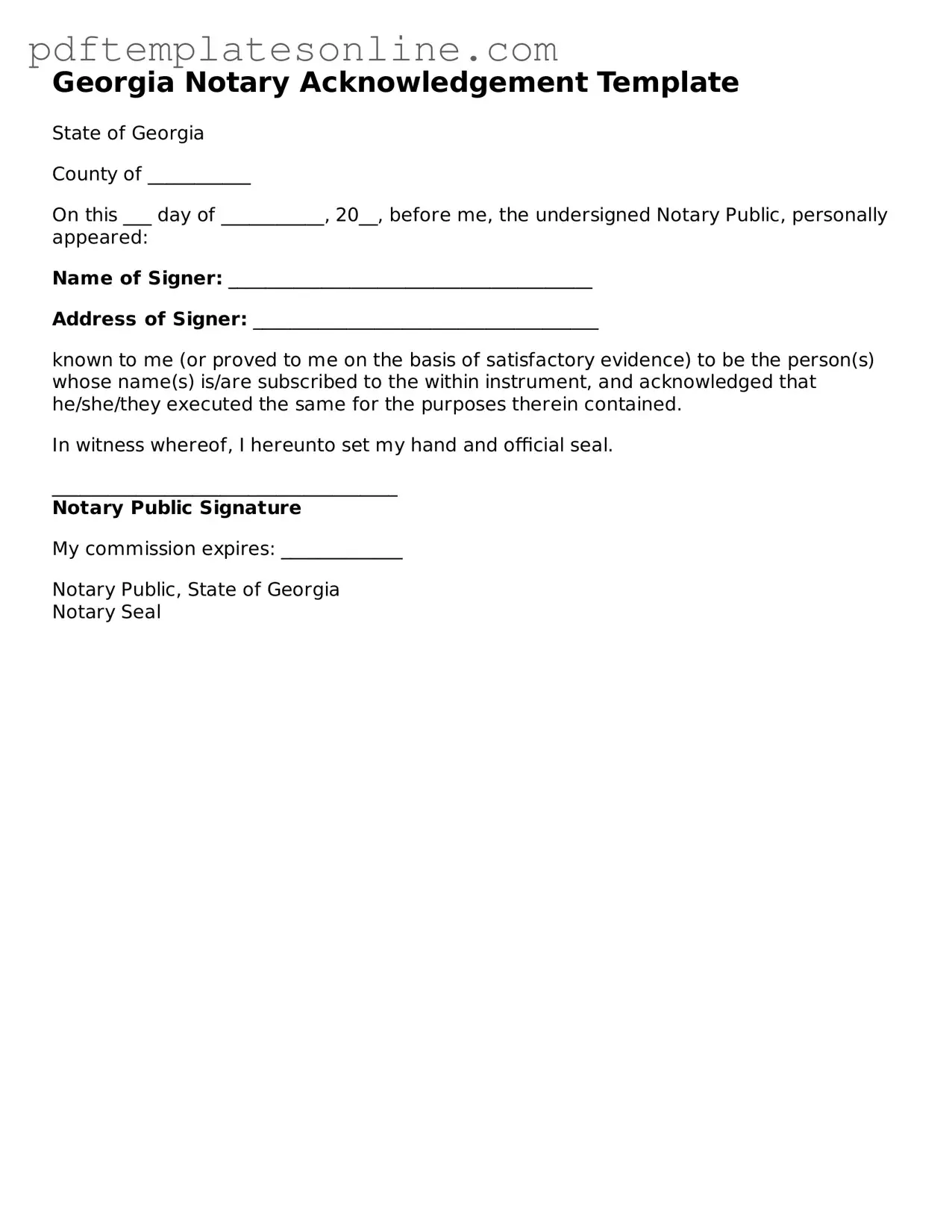Filling out the Georgia Notary Acknowledgement form can seem straightforward, but many individuals make common mistakes that can lead to delays or complications. One frequent error is failing to include the correct date. The date is crucial because it signifies when the acknowledgment took place. Without it, the document may be considered incomplete.
Another common mistake is neglecting to provide the signer's name as it appears on their identification. If the name on the form does not match the ID, the notary may refuse to acknowledge the signature. It’s essential to double-check that the names are consistent to avoid any issues.
People often overlook the requirement for the notary's signature and seal. The notary must sign and affix their official seal on the document. If either of these elements is missing, the acknowledgment will not be valid. This step is critical for ensuring the document is legally recognized.
Sometimes, individuals forget to check the capacity in which the signer is acting. If the signer is representing a business or acting in a specific role, this must be clearly stated. Omitting this information can create confusion about the authority of the signer.
Another mistake involves using an outdated version of the form. Laws and requirements can change, so it’s important to ensure that you are using the most current version of the Georgia Notary Acknowledgement form. Using an old form may lead to rejection by banks or other institutions.
Additionally, people often fail to read the instructions carefully. Each section of the form has specific requirements. Not paying attention to these can result in incomplete or inaccurate submissions, which can cause delays in processing.
Another issue arises when individuals do not provide adequate identification for the signer. Notaries are required to verify the identity of the person signing the document. If the signer does not have acceptable ID, the notary cannot proceed with the acknowledgment.
Lastly, many forget to ensure that the signer is present at the time of notarization. The notary must witness the signature being made. If the signer is not physically present, the acknowledgment cannot be completed. Always remember that presence is key to a valid notarization.
